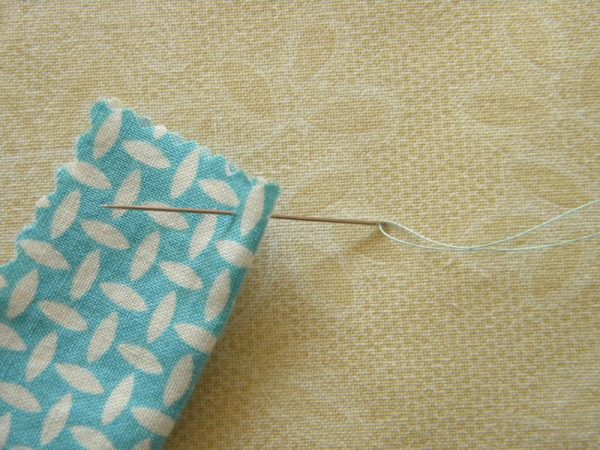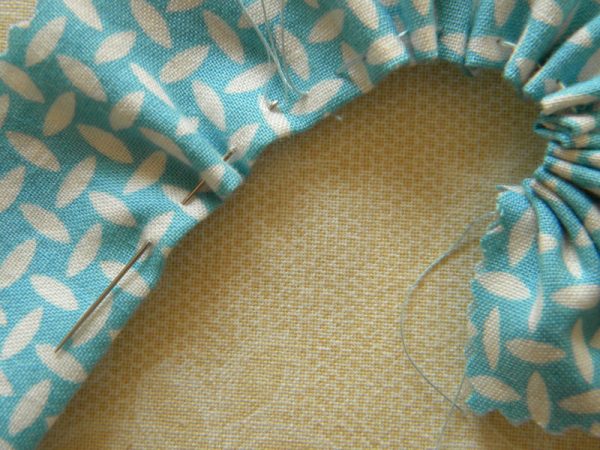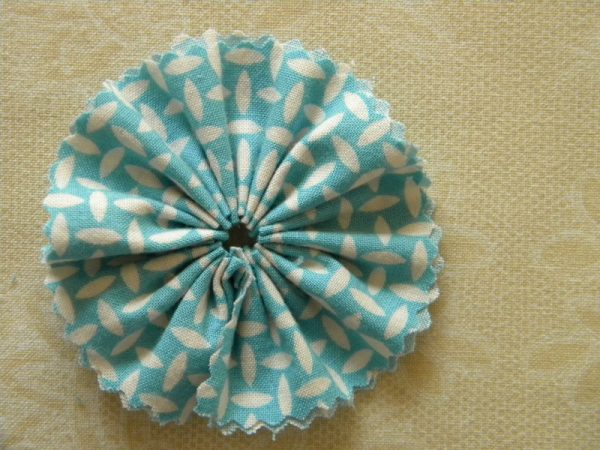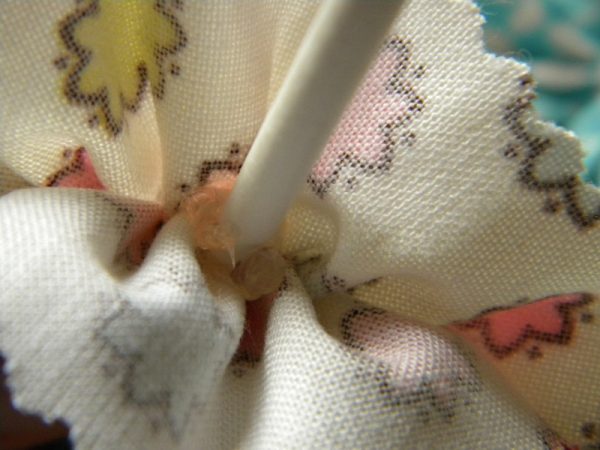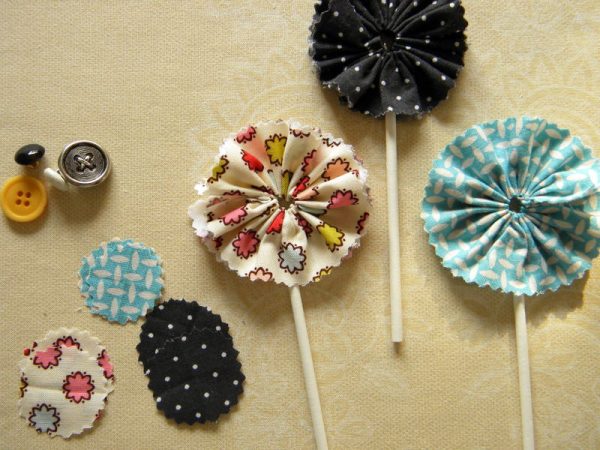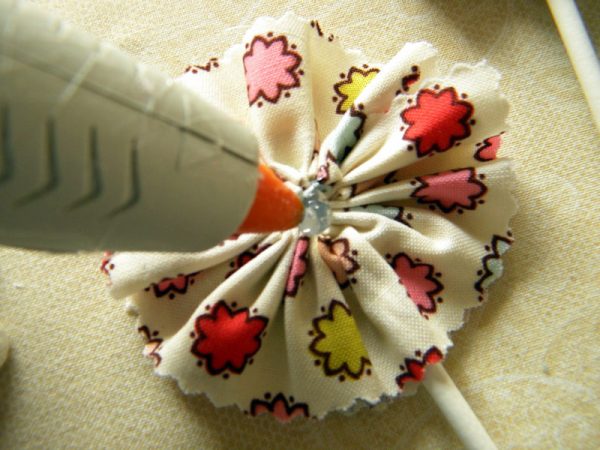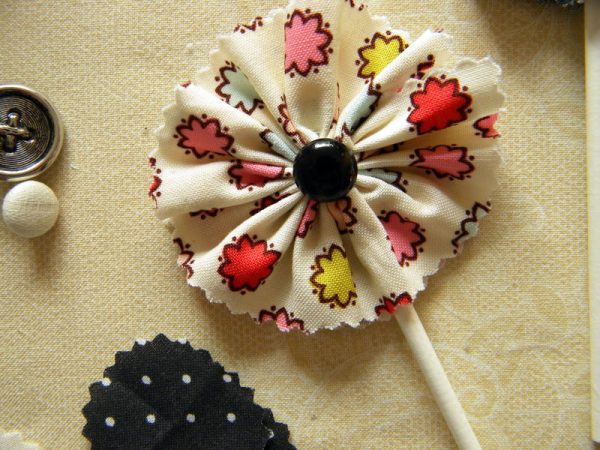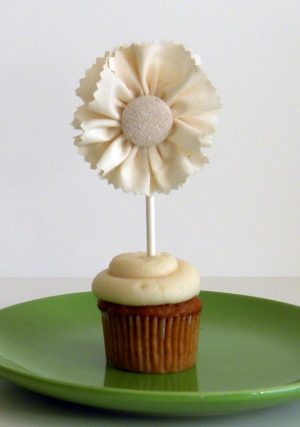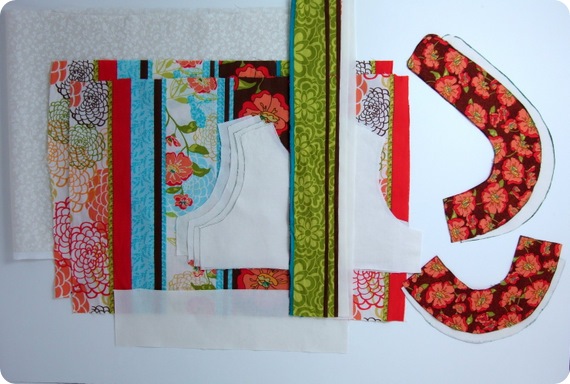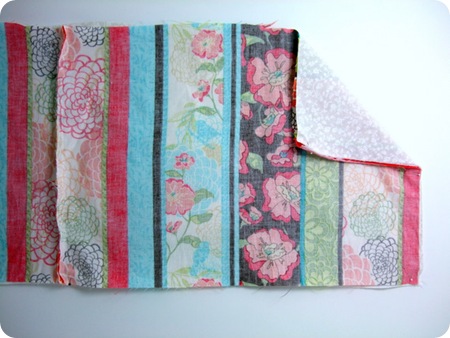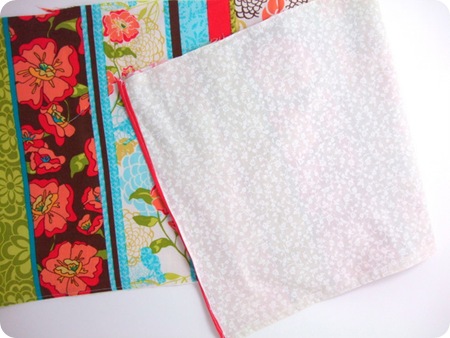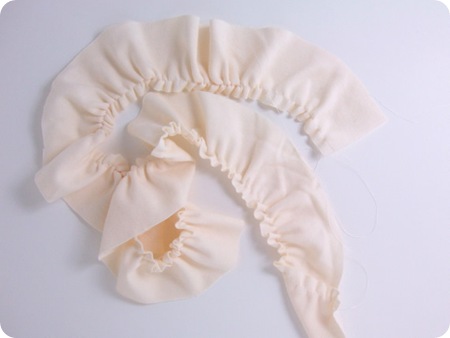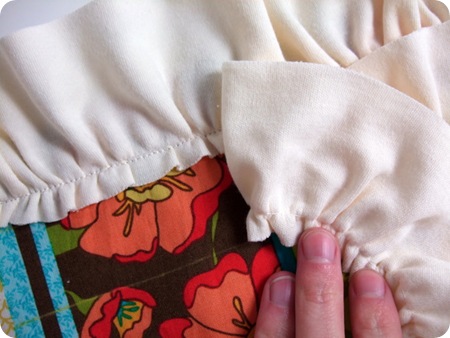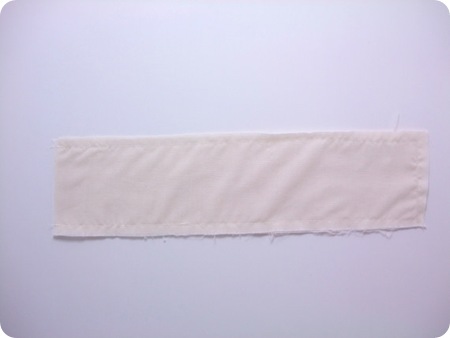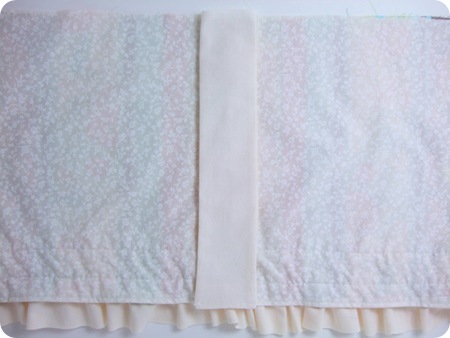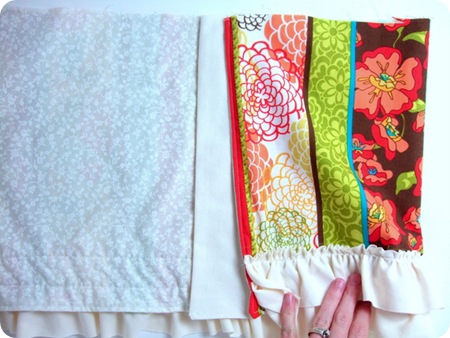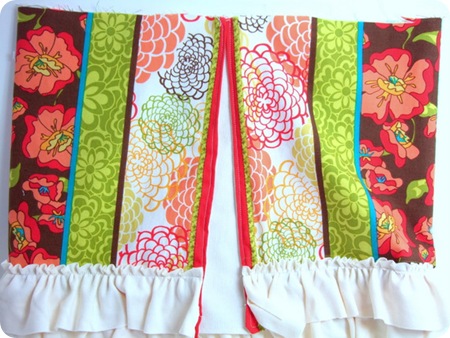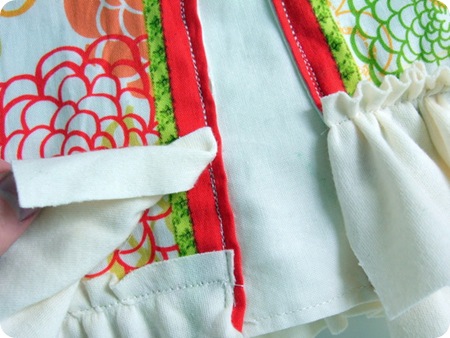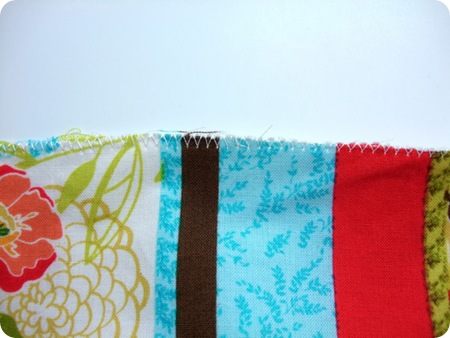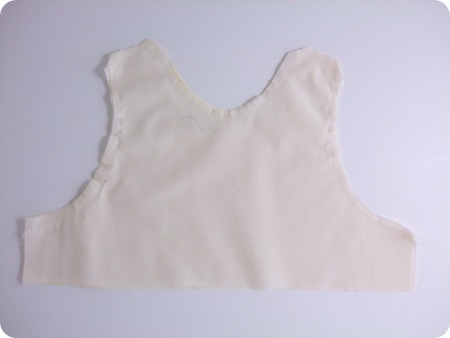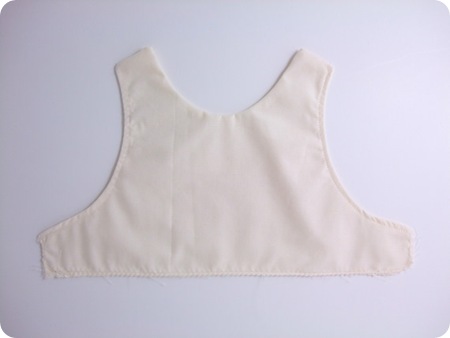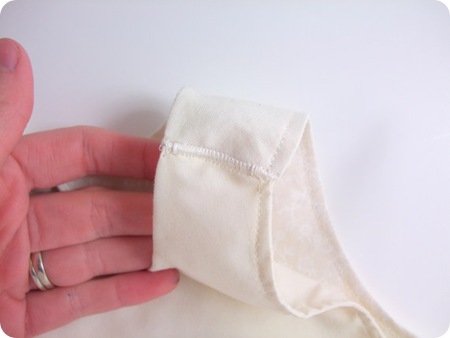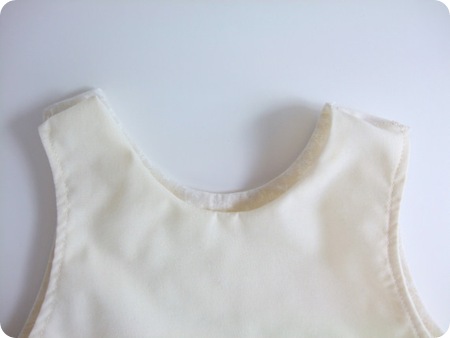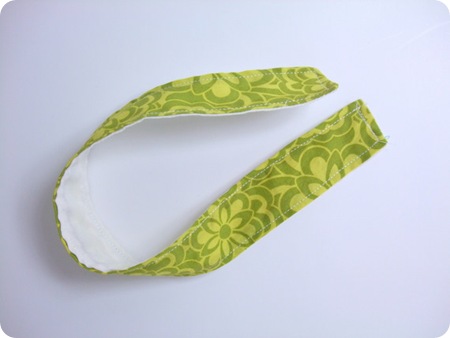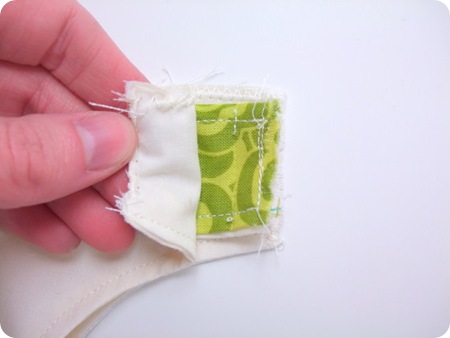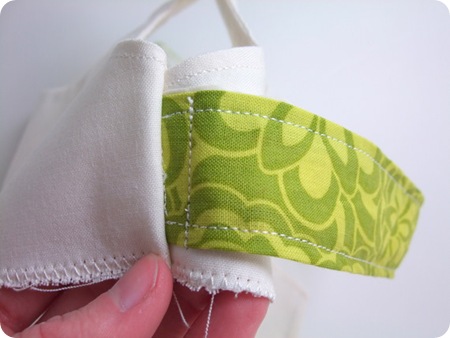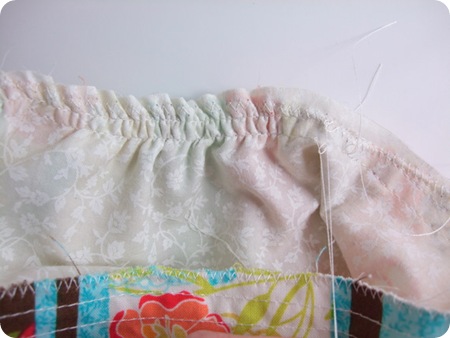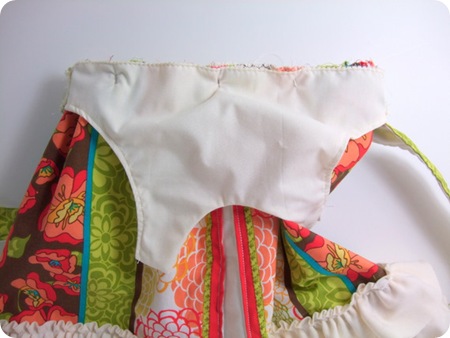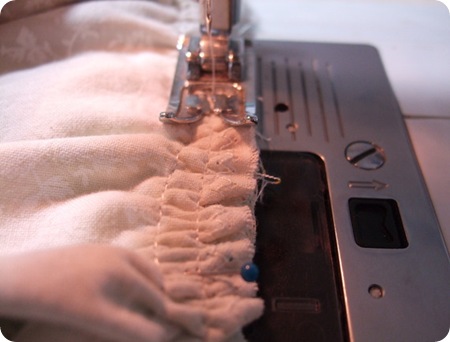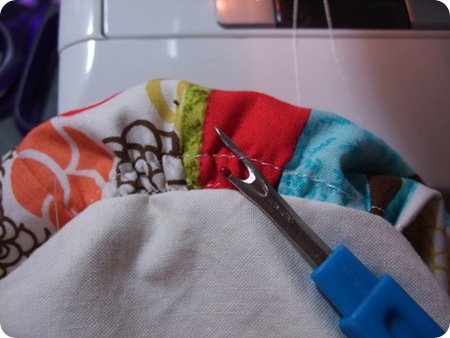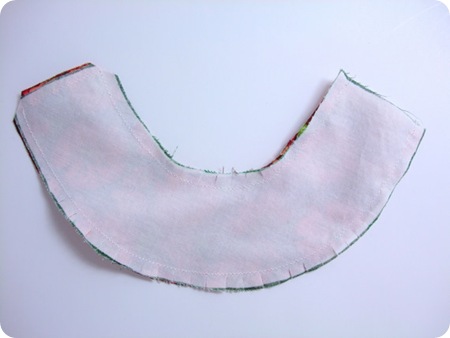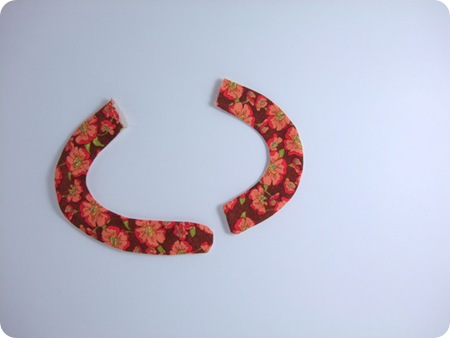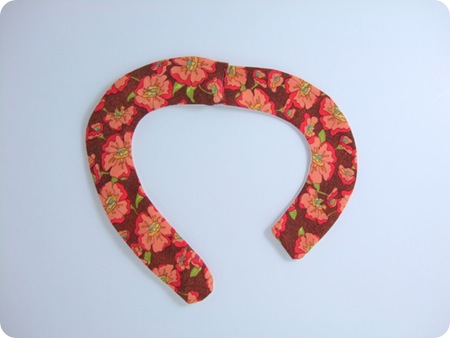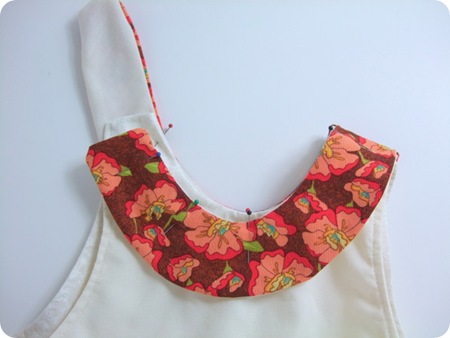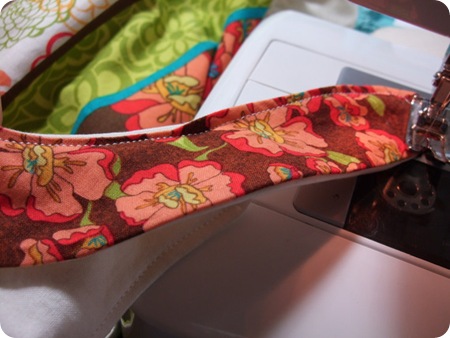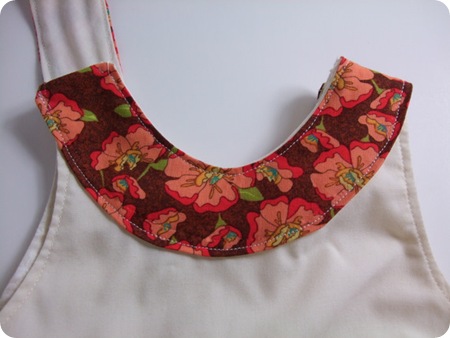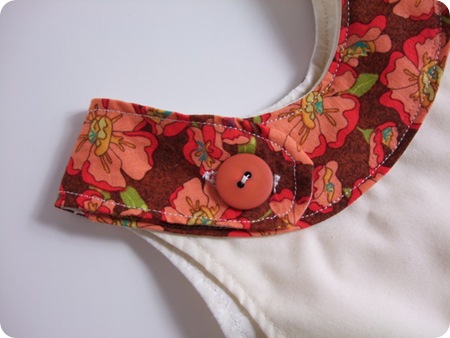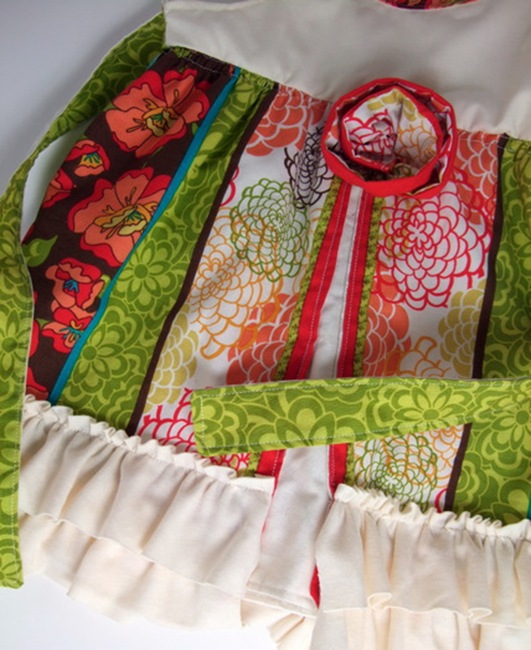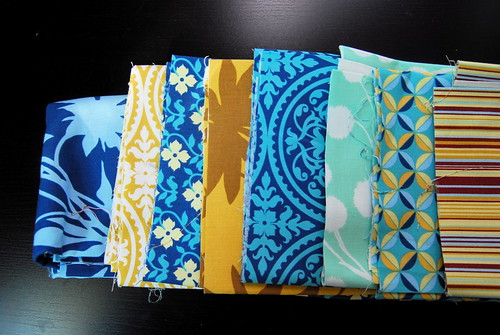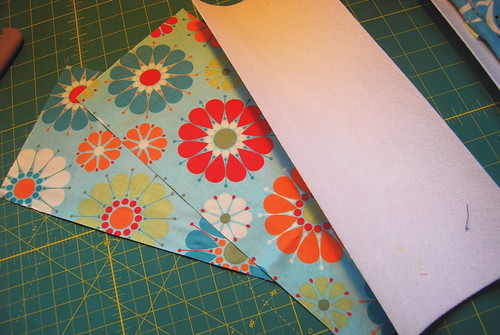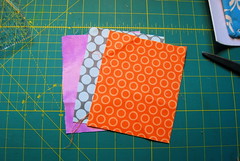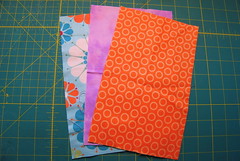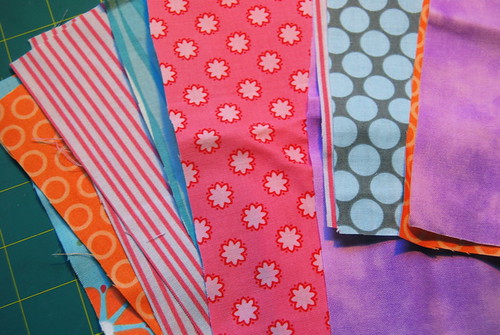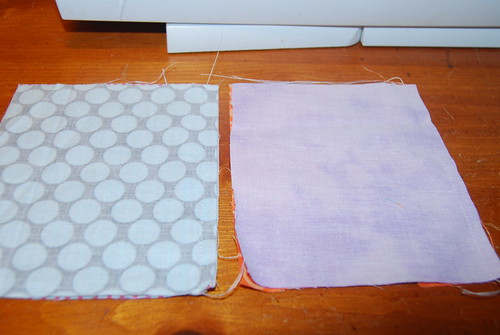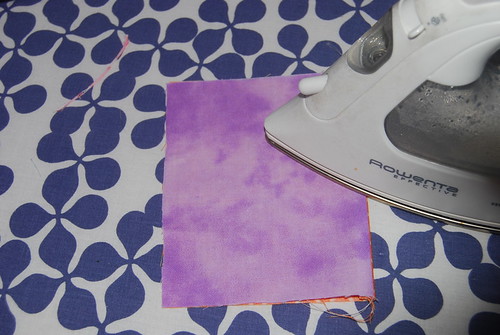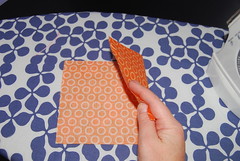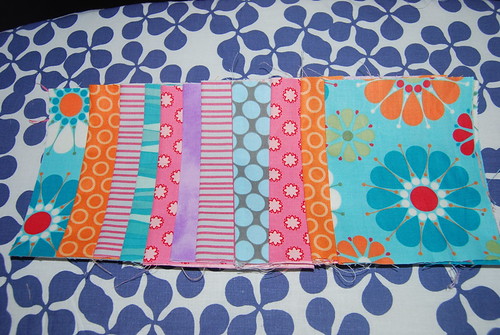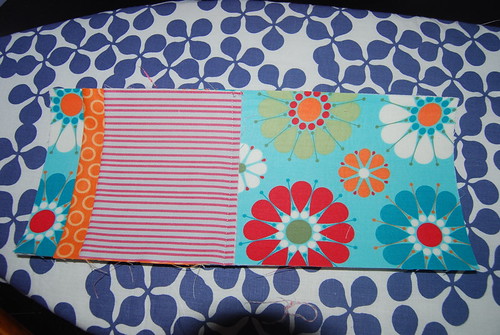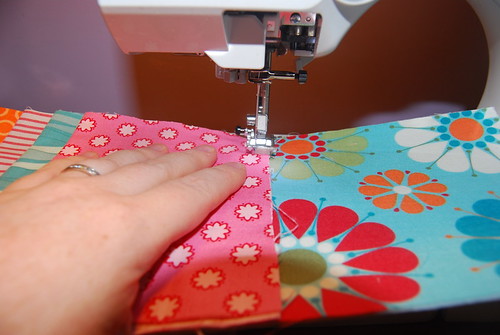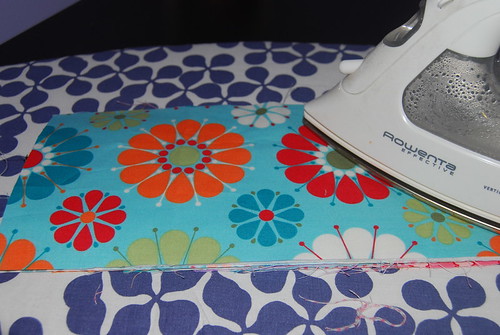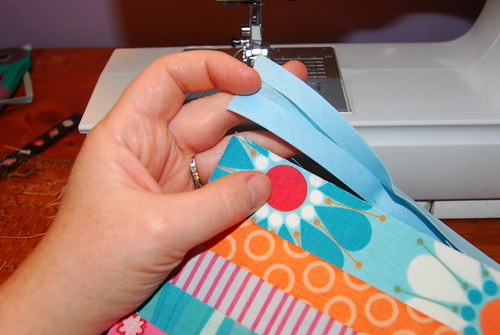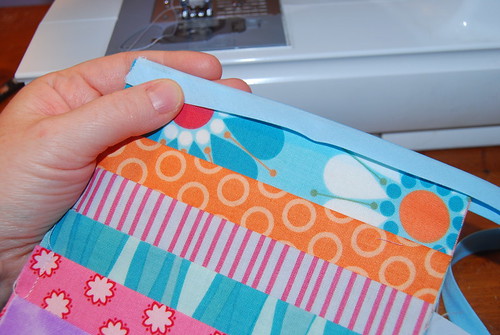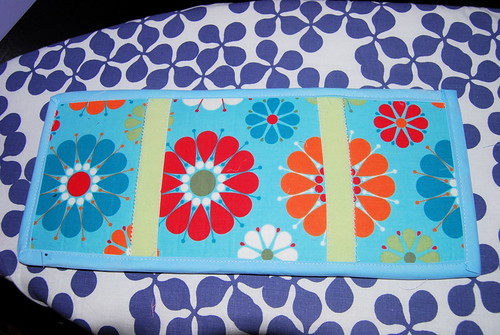Materials:
- Approximately 19 yd/17 m Caron Simply Soft (shown in Ocean)
- Approximately 4 yd/3-1/2m Caron Simply Soft (shown in Vanilla)
- MC (Ocean) will be the headband base and inner and outer ring of the flower
- CC (Vanilla) will be the inner ring of the flower
- Size H/8/5 mm crochet hook
- Scissors
- Tapestry needle
- Matching sewing thread (optional)
- Approximately 4 yd/3-1/2m Caron Simply Soft (shown in Vanilla)
- MC (Ocean) will be the headband base and inner and outer ring of the flower
- CC (Vanilla) will be the inner ring of the flower
- Size H/8/5 mm crochet hook
- Scissors
- Tapestry needle
- Matching sewing thread (optional)
HELPFUL HINT:
This pattern contains instructions on how to make an adult-size headband. However, the head band base can be adjusted to fit smaller-sized heads. Keep in mind that the flower is sewn onto the headband base.
This pattern contains instructions on how to make an adult-size headband. However, the head band base can be adjusted to fit smaller-sized heads. Keep in mind that the flower is sewn onto the headband base.
HEADBAND:
Starting with MC, ch 121 and turn.
Row 1: In second ch from hook, sc 20, ch 80, sk next 80 ch, and sc in last 20 sts. Do not turn. (If needed, adjust the “ch 80” in this row to change the size of the headband. For example, a child’s headband for ages 3 to 6 would have approximately ch 70 to 75 instead of ch 80.)
Row 2: Working on the opposite side of the last 20 sc completed in Row 1, sl st in 20 sc, ch 80, sk 80 previous chs, and sl st in last 20 sts. Tie off and weave in ends.
You should now have a linear headband. Each end is the thicker “tie” portion used to tie the head band around the head, with 3 sep arate chains of 80 in the middle of each end.
Starting with MC, ch 121 and turn.
Row 1: In second ch from hook, sc 20, ch 80, sk next 80 ch, and sc in last 20 sts. Do not turn. (If needed, adjust the “ch 80” in this row to change the size of the headband. For example, a child’s headband for ages 3 to 6 would have approximately ch 70 to 75 instead of ch 80.)
Row 2: Working on the opposite side of the last 20 sc completed in Row 1, sl st in 20 sc, ch 80, sk 80 previous chs, and sl st in last 20 sts. Tie off and weave in ends.
You should now have a linear headband. Each end is the thicker “tie” portion used to tie the head band around the head, with 3 sep arate chains of 80 in the middle of each end.
FLOWER:
Using MC, ch 2 and turn.
Rnd 1: In second ch from hook, sc 12 to form a circle of sts, and sl st to join rnd.
Rnd 2: Ch 3, *[sk 1 sc, sc 1, ch 3]; rep from * around to form 6 loops, sl st into first ch of beg ch-3.
Rnd 3: Using CC, *[sc 1, hdc 1, dc 1, hdc 1, sc 1 in next loop]; rep from * in each ch-3 loop from the pre vious rnd for a total of 6 petals. Sl st to sc 1 of the first petal.
Rnd 4: Continuing in CC, ch 3, *[in hdc of petal, sc 1, ch 3, sc in sc of same petal, and ch 3]. (Each petal should have a sc in the hdc and the last sc.) Rep from * around to form 12 loops, then sl st in third ch of beg ch-3.
Rnd 5: Using MC, *[sc 1, hdc 1, dc 1, hdc 1, sc 1 in next loop]; rep from * in each ch-3 loop from the previous rnd for a total of 12 petals. Sl st to sc 1 of first petal. Fasten off and weave in ends.
Using MC and the tapestry needle, sew the flower onto the headband base on each of the 3 strands. The flower shown on page 58 is placed about 25 stitches from one edge of the headband.
Using MC, ch 2 and turn.
Rnd 1: In second ch from hook, sc 12 to form a circle of sts, and sl st to join rnd.
Rnd 2: Ch 3, *[sk 1 sc, sc 1, ch 3]; rep from * around to form 6 loops, sl st into first ch of beg ch-3.
Rnd 3: Using CC, *[sc 1, hdc 1, dc 1, hdc 1, sc 1 in next loop]; rep from * in each ch-3 loop from the pre vious rnd for a total of 6 petals. Sl st to sc 1 of the first petal.
Rnd 4: Continuing in CC, ch 3, *[in hdc of petal, sc 1, ch 3, sc in sc of same petal, and ch 3]. (Each petal should have a sc in the hdc and the last sc.) Rep from * around to form 12 loops, then sl st in third ch of beg ch-3.
Rnd 5: Using MC, *[sc 1, hdc 1, dc 1, hdc 1, sc 1 in next loop]; rep from * in each ch-3 loop from the previous rnd for a total of 12 petals. Sl st to sc 1 of first petal. Fasten off and weave in ends.
Using MC and the tapestry needle, sew the flower onto the headband base on each of the 3 strands. The flower shown on page 58 is placed about 25 stitches from one edge of the headband.
VARIATIONS
* Make the headband and the flower in the same color.
* Add a decorative button to the center of the flower.
* Make the headband part shorter and use it as a cuff bracelet.
* Make the headband and the flower in the same color.
* Add a decorative button to the center of the flower.
* Make the headband part shorter and use it as a cuff bracelet.



